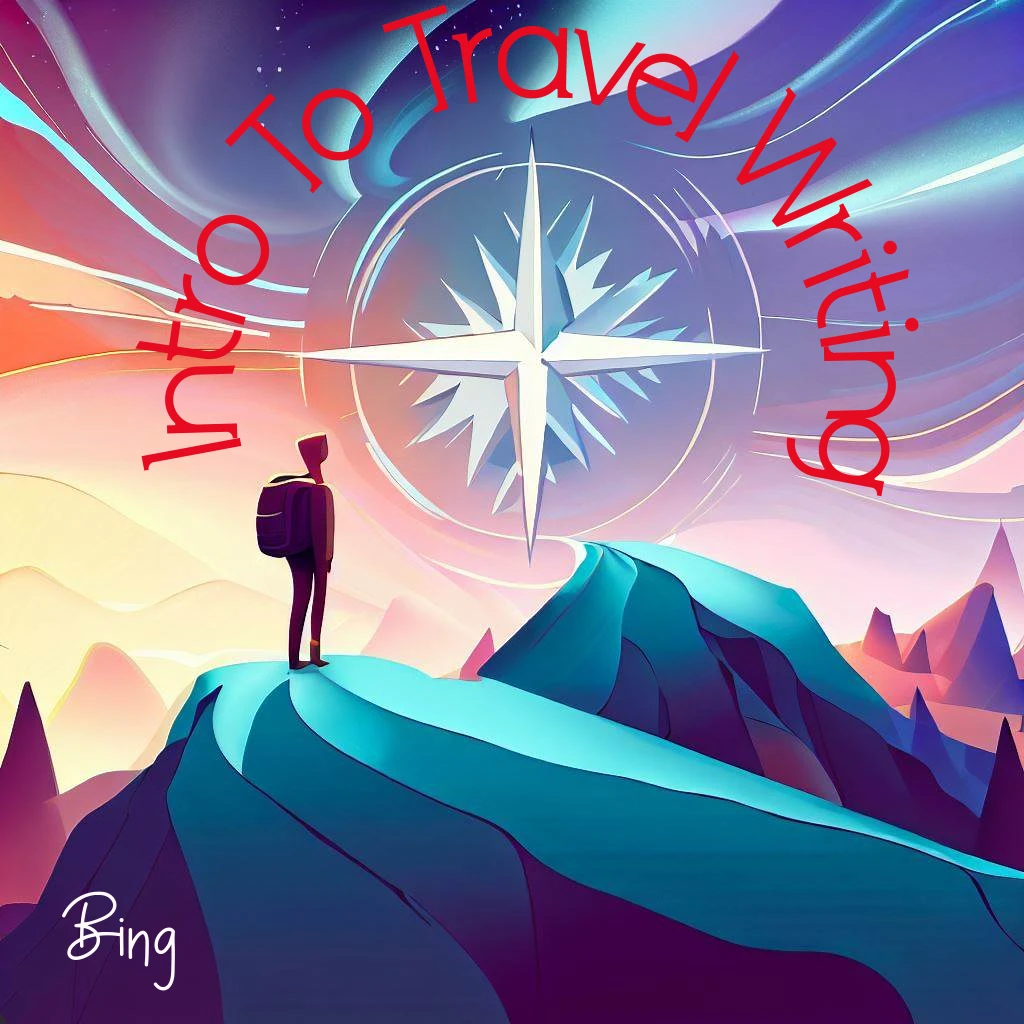Many talented writers have shaped travel writing over the centuries, each bringing their unique perspective and style to the genre. Here are a few notable figures whose work has left an indelible mark on travel literature:
Marco Polo: The Trailblazer of Travel Writing (1254-1324)

Marco Polo, born in 1254, was an Italian explorer who blazed trails through the then-mysterious reaches of Asia. His odyssey, painstakingly documented in the seminal work, “The Travels of Marco Polo,” opened up a world that was unknown and unseen by most Europeans of his time, encompassing the sweeping expanse of Asia and introducing the West to the cultures, customs, and landscapes of the East. Marco Polo was not just an explorer but a pioneer in travel writing. Born into a family of merchants in Venice, Polo embarked on an epic 24-year journey that took him through Asia, traversing treacherous terrains and vast seas, crossing the formidable Pamir Mountains and the uncharted steppes of Central Asia, eventually reaching the court of the Mongol ruler, Kublai Khan, in China.
“The Travels of Marco Polo,” also known as “Il Milione,” is one of the most influential travel books ever. It offers an elaborate and vivid portrayal of the 13th-century East, covering regions from the Middle East and the rich tapestry of Persia, through the bustling markets of India, to the grandeur of the Mongol Empire and the sophistication of China. Polo’s eye for detail, fascination with the exotic, and knack for storytelling transformed his observations into a captivating narrative. Polo’s writings gave Europeans their first comprehensive glimpse of the Eastern world. His accounts detailed the physical aspects of the places he visited—such as their geography, flora, and fauna—and delved into their social, cultural, and political landscapes. Polo wrote of the East’s wealth, religions, languages, traditions, architecture, and innovations. From paper money in China to the strategic might of the Mongol cavalry, his narratives were filled with astonishment and admiration.
Marco Polo’s legacy lies in the adventures he embarked on and the rich tapestry of travel literature he spawned. His depictions of the East challenged the parochial worldview of many Europeans, fanning the flames of curiosity and the desire for exploration. They paved the way for the Age of Discovery. They inspired countless explorers and writers, including Christopher Columbus, who reportedly carried a copy of Polo’s book on his voyage to the New World. Marco Polo’s contribution to travel writing underlines the power of an authentic, well-told travel narrative. His writings continue to captivate readers, encouraging them to see the world through a wider lens, inspiring a sense of wanderlust, and nurturing a deeper appreciation for the beauty and diversity of our world. In his footprints, we see the early outlines of the world we now traverse, a world brought closer together through the shared understanding that travel—and its subsequent telling—can foster.
Mark Twain: The Humorist of American Travel Writing

In American letters, few names shine as brightly as Mark Twain. Born Samuel Langhorne Clemens in 1835, Twain is best known for his quintessentially American novels, “The Adventures of Tom Sawyer” and “Adventures of Huckleberry Finn.” However, his role as a pioneer of American travel writing often goes unheralded. The chronicle of his travels through Europe and the Holy Land, “The Innocents Abroad,” stands as one of the seminal works in the genre, both for its keen observations of foreign lands and its distinctly humorous style.
“The Innocents Abroad,” published in 1869, emerged from Twain’s journey aboard the steamship Quaker City, which took him and a group of fellow Americans on a grand tour of Europe and the Holy Land. Twain’s observations during this voyage formed the basis of his travelogue, which became an instant bestseller and remains one of the best-selling travel books in American literature.
Twain’s approach to travel writing was characterized by his unerring eye for the absurd and the ironic. He turned his biting wit and humor to the customs, history, and sights of the places he visited, often satirizing travel conventions and the pretensions of tourists, including himself. His accounts were irreverent, insightful, and, above all, funny. Twain’s readers were not merely transported to the ruins of Rome, the art galleries of Paris, or the deserts of the Holy Land; they were also treated to a rollicking good time filled with laughter and amusement.
Yet, for all his humor, Twain keenly observed people and cultures. He deftly painted the landscape of the regions he visited and vividly portrayed the lives and habits of their inhabitants. Twain’s narratives bore the mark of authenticity; they were based on his first-hand experiences, on the things he saw, heard, and felt during his travels. This sense of realism and his trademark wit and satire made his journey writing entertaining, insightful, and meaningful.
Mark Twain’s influence on travel writing in the United States cannot be overstated. He helped popularize the genre, bringing it into the mainstream of American literature. His humor, satire, and observation set the tone for the following American travel writing, from Bill Bryson’s humorous accounts to Paul Theroux’s detailed comments.
Mark Twain was not just an American author and humorist. He was also a pathfinder in travel writing, using his gift for humor and his writing skill to turn his travels into engaging narratives. His work inspires readers and writers alike, reminding us that journey is not just about seeing new places but also about experiencing them, laughing at them, and, most importantly, learning from them.
Freya Stark: The Fearless Voyager of the Middle East

Born in 1893, Dame Freya Stark was no ordinary British woman. She was an explorer, a writer, and a trailblazer, who ventured into regions few Western women of her time dared to tread. Stark’s writings about her travels, especially in the Middle East and Afghanistan, are classics in travel literature. Books such as “The Southern Gates of Arabia” testify to her fearless spirit, sharp observation skills, and deep appreciation for the cultures she immersed herself in. Freya Stark’s travelogues are more than mere accounts of her physical journey. They are rich tapestries woven with the threads of culture, history, geography, and human connection. Stark’s Middle Eastern odyssey began in Lebanon and Syria in the 1920s, continuing into Iraq, Iran, and Afghanistan, and culminated in Yemen, where she mapped uncharted territory for the Royal Geographical Society. This feat was particularly remarkable given that she was a woman in a time when such expeditions were primarily the domain of men. In her celebrated book, “The Southern Gates of Arabia,” Stark chronicled her 1936 journey to the Hadhramaut, a region in eastern Yemen, an area virtually unexplored by Westerners at the time. Through her vivid and poetic prose, she brought to life the rugged landscapes, the isolated communities, and the ancient ruins she encountered, painting an intimate and vibrant portrait of a world that was, until then, largely unknown.
Stark’s travel writings shine with her keen insights into the cultures and societies she visited. She didn’t just observe. She engaged. She learned Arabic and Persian to communicate with the locals more effectively and understand their stories, history, and perspectives. This deep engagement is reflected in her narratives, which are descriptive and rich in cultural and historical insights. What set Freya Stark apart was her undeniable courage, her curiosity, and her respect for the regions she traversed. She approached her travels with an open mind and heart, seeking to understand rather than judge, to build bridges rather than erect walls. Her work challenged many Westerners’ stereotypes and misconceptions about the Middle East, offering a more nuanced and empathetic perspective.
Freya Stark’s legacy in travel writing is one of bravery, insight, and connection. Her narratives broke the mold, offering readers a glimpse of the world through a wise, respectful, and unflinchingly honest lens. She demonstrated the transformative power of travel and travel writing—how it can broaden our horizons, challenge our preconceptions, and foster a deeper understanding of our shared humanity. In an era where cultural appreciation is more important than ever, Freya Stark’s work continues to inspire, educate, and ignite wanderlust in readers worldwide.
Bruce Chatwin: Bridging Fact and Fiction

In the annals of travel writing, Bruce Chatwin occupies a special place. Born in 1940, this British writer and adventurer left an indelible mark on the genre through his imaginative narratives and distinctive style, which deftly straddled the line between fact and fiction. His best-known works, “In Patagonia” and “The Songlines,” are exquisite examples of his unique approach to travel writing. Bruce Chatwin was a master storyteller. His travel narratives were more than just accounts of his journeys; they were rich, vivid, and compelling tapestries that intertwined the threads of geography, culture, history, and personal experience. Chatwin’s prose, at once concise and evocative, breathed life into the places he visited, transforming them into characters as real and complex as the people he met.
“In Patagonia,” published in 1977, charts Chatwin’s journey to the southernmost reaches of South America. Rather than a conventional travelogue, the book is a collage of vignettes, anecdotes, and reflections that paint a kaleidoscopic portrait of the region. It’s a narrative mosaic, filled with tales of Welsh settlers, Butch Cassidy and the Sundance Kid, extinct animals, and naval history, all set against the starkly beautiful Patagonian landscape. In “The Songlines” (1987), Chatwin turned his gaze to Australia, exploring the culture of the Aboriginal people, particularly their concept of ‘Songlines’ or ‘Dreaming Tracks’ – pathways across the land that correspond to the routes taken by the ancestral spirits in their ‘Dreamtime.’ Part travelogue, part philosophical discourse, and part semi-autobiographical novel, “The Songlines,” showcases Chatwin’s ability to transform travel writing into a form of deep existential exploration.
One of the defining characteristics of Chatwin’s work is his blending of fact and fiction. His stories, while rooted in his travel experiences, are embroidered with myth, legend, and imagination, giving them an almost dreamlike quality. This fusion of reality and vision resulted in narratives as captivating as they were insightful, offering readers an immersive, almost literary, travel experience. Bruce Chatwin’s untimely death in 1989 left the world of travel writing bereft of one of its most innovative voices. However, his work continues to inspire travelers and writers alike, reminding us of the power of narrative to transform our understanding of place. Chatwin’s books are more than just records of his journeys; they are meditations on movement, people, and the unforgettable impressions left by the landscapes we traverse. His work captures the very essence of travel – the quest for meaning, connection, and understanding in an ever-changing world.
Paul Theroux: The Candid Chronicler of Journeys

With an illustrious writing career spanning over five decades, Paul Theroux has firmly established himself as one of the most influential figures in travel literature. Born in 1941, this American author has a keen eye for detail and a remarkable ability to capture the nuances of the places he visits. These characteristics shine through in his myriad travelogues. Theroux’s travel narratives stand out for their candidness and attention to the ordinary and the extraordinary. He doesn’t romanticize travel; instead, he presents it as a complex and often challenging experience filled with highs and lows. His writing style combines rich descriptions with insightful observations, all laced with a distinct sense of humor.
One of Theroux’s most notable works is “The Great Railway Bazaar,” published in 1975. In this classic of travel literature, he recounts his four-month journey by train from London through Europe, the Middle East, the Indian subcontinent, Southeast Asia, and across the Trans-Siberian Railway. The book is not just about the destinations but a detailed study of the characters he met and the adventures (and misadventures) he encountered along the way. “The Great Railway Bazaar” is, at its heart, an exploration of the essence of travel. Theroux’s narrative captures the rhythms of long-distance train travel, the changing landscapes, the diverse cultures, and the myriad of human interactions. He probes not just the exterior world but also the interior landscape of the traveler, examining the psychological aspects of being on the road for an extended period.
Beyond “The Great Railway Bazaar,” Theroux’s bibliography is rich with tales of journeys worldwide, each offering a unique perspective. Whether he’s canoeing in the Pacific for “The Happy Isles of Oceania” or traveling by car through the American South for “Deep South,” Theroux’s writing brings to life the spirit of the places he visits, their people and their stories. What sets Theroux apart is his willingness to venture beyond the beaten path, immerse himself in the local culture, and engage with people from all walks of life. His travelogues offer more than just descriptions of places; they offer insights into the human condition and the shared experiences that connect us, despite our cultural differences.
Paul Theroux’s contribution to travel literature is immense. His compelling narratives, characterized by their honesty, detail, and depth, have entertained readers worldwide and expanded the boundaries of the genre. His work is an enduring reminder of travel’s capacity to broaden our horizons, challenge our preconceptions, and enrich our understanding of the world and our place in it.
Pico Iyer: The Cultural Navigator in a Globalized World

Born in 1957 to Indian parents in Oxford, England, and raised between school in England and summers in India, Pico Iyer was destined for a life of border crossings. An acclaimed essayist, novelist, and long-time travel writer, Iyer has carved out a unique niche in travel literature, exploring themes of cross-cultural identities, globalization, and the concept of ‘home’ in an increasingly interconnected world. Iyer’s writings are rooted in his own experiences as a global nomad. His narratives are as much about internal journeys as physical travel. This reflective quality lends his travelogues a depth beyond mere description, delving into the nuanced complexities of culture, identity, and place.
One of Iyer’s most celebrated works is “Video Night in Kathmandu: And Other Reports from the Not-So-Far East.” Published in 1988, the book is a collection of essays chronicling his travels through various Asian countries, including Nepal, Japan, China, India, and Thailand. Each chapter is a thoughtful meditation on the effects of Western pop culture on traditional Asian societies, highlighting the contrasts and contradictions that arise from this cultural intersection. In “The Global Soul: Jet Lag, Shopping Malls, and the Search for Home,” Iyer further expands on cultural hybridity in the age of rapid globalization. He explores ‘global souls’, transnational individuals constantly shifting between cultures and identities. Through personal anecdotes and observations, he examines the multifaceted impacts of globalization, from the homogenizing influence of global pop culture to the emergence of multicultural cities.
Iyer’s prose is evocative and perceptive, filled with rich imagery and insightful commentary. His narratives beautifully capture the sights, sounds, and spirit of the places he visits. Yet, they also probe deeper, questioning notions of cultural identity and belonging in a rapidly globalizing world. His work voices the increasingly common experience of transnationalism, illuminating the complex tapestry of today’s globalized existence. Pico Iyer’s contributions to travel literature extend beyond the landscapes he describes. His writings offer readers a profound exploration of the intersections of cultures, the fluidity of identity, and the concept of home in an ever-changing world. In doing so, he redefines what it means to be a travel writer in the 21st century, embodying the role of a cultural interpreter and a navigator of the global soul.
Elizabeth Gilbert: Self-Discovery Embodied in Words

Born in 1969, Elizabeth Gilbert is an American author whose memoir, “Eat, Pray, Love,” catapulted her into global literary fame. The book, published in 2006, resonates with readers worldwide for its frank and often humorous account of a personal journey. Gilbert’s writing, characterized by deep introspection and candid self-revelation, has led many to regard her as a symbolic figure of self-exploration in travel writing. “Eat, Pray, Love” traces Gilbert’s year-long journey through Italy, India, and Indonesia, where she indulged in the pleasures of food, delved into spiritual practices, and sought balance in life after her tumultuous divorce. More than a travelogue, this memoir is a chronicle of personal transformation that beautifully encapsulates Gilbert’s journey toward self-understanding and acceptance.
In Italy, Gilbert sought solace in the country’s culinary delights, immersing herself in the Italian way of life, filled with a zest for food and a penchant for ‘il dolce far enter – the sweetness of doing nothing. This section, represented by ‘Eat,’ explores Gilbert’s adventures with Italian cuisine as she learns to embrace joy and pleasure in her life again. In India, encapsulated by the term ‘Pray,’ Gilbert ventured into spirituality, spending four months in an Ashram. She learned to meditate there and wrestled with her inner demons, gradually attaining a newfound sense of peace and spiritual connection. In Indonesia, particularly Bali, symbolized by ‘Love,’ Gilbert sought to find a balance between worldly enjoyment and divine transcendence. In this paradisiacal island, she found love again in a context of newfound self-understanding and acceptance.
Gilbert’s prose is engaging, honest, and deeply personal. Her reflections on her experiences, emotions, and the people she meets along the way lend her narrative a profound authenticity. The balance she achieves between vividly painting the places she visits and diving deep into her emotional journey makes “Eat, Pray, Love” a standout piece in travel literature. Beyond its success as a memoir, “Eat, Pray, Love” has influenced an entire generation of readers, inspiring many to embark on their journeys of self-discovery and introspection. Elizabeth Gilbert’s approach to travel writing—simultaneously outwardly exploratory and inwardly reflective—has dramatically expanded the genre, cementing her legacy as a seminal voice in contemporary travel literature.
These writers, among many others, have contributed to the richness and diversity of travel literature. Their works continue to inspire new generations of travelers and writers, demonstrating the enduring appeal of this genre.



